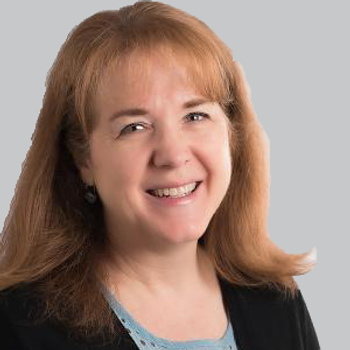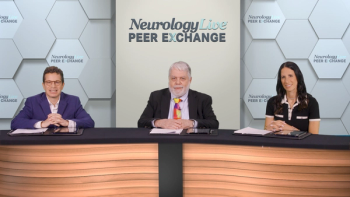
Symptoms, Referrals and Importance of Early Diagnosis of Spinal Muscular Atrophy (SMA) in Children / Sintomas, encaminhamento e importância do diagnóstico precoce de Atrofia Muscular Espinhal (AME) em crianças
Drs Juliana Gurgel Giannetti, Adriana Banzzatto Ortega and Marcelo Kerstenetzky discuss symptoms of spinal muscular atrophy and diagnosis and referral process in Brazil. / Drs Juliana Gurgel Giannetti, Adriana Banzzatto Ortega e Marcelo Kerstenetzky discutem sintomas da atrofia muscular espinhal, diagnóstico e processo de encaminhamento no Brasil.
Episodes in this series

John Brandsema, MD: Dr Giannetti, in Brazil what are the early symptoms that lead families to bring their children to care and who do the families see first when they suspect something is not right with their child?
Juliana Gurgel Giannetti, MD, PhD: When the patient has some manifestation of SMA, it is important that we remember the different forms to recognize the early signs of the disease. In babies with SMA type 1, they are generally hypotonic babies with motor delay and generally have trouble supporting their neck; and this calls the family's attention. In SMA type 2, we also see motor delay; they are children who can sit while still having difficulty standing up and walking around. In SMA type 3, we don't have the flopping infant, or hypotonic baby, but we have a case similar to a muscular disease, such as weakness, especially in the lower limbs. These patients have difficulty walking, climbing stairs, and getting up from the floor. These are the main clinical manifestations. In babies with SMA type 1, besides the motor milestones, sometimes the family notices a breathing difficulty such as tachypnea or paradoxical breathing, and difficulty swallowing. When this happens, parents usually refer the child to their pediatrician. So, the pediatrician is the first specialist who will access this information coming from the family. However, it is also common that the pediatrician asks the family to wait because the child may still be within a normal range. Eventually the pediatrician refers the child to a physical therapist who starts rehabilitation. They usually have more experience with SMA and often suggest a referral to the neuropediatrician. In older children with SMA type 3, it is common that the pediatrician notices an issue and refers them to an orthopedist. The orthopedist evaluates and eventually refers them to a neuropediatrician. So, the patient journey is usually long until the patients reach a pediatric neurologist or a general neurologist.
John Brandsema, MD: Dr Kerstenetzky, as a pediatrician, what is the importance of early recognition by a general pediatrician and the referral process in your country?
Marcelo Kerstenetzky, MD: SMA is one of the leading genetic causes of death in infants, so early diagnosis and referral to a specialist is of vital importance for these patients. We can only diagnose what we can think of, so it is important that pediatricians, primary care physicians, and physical therapists become familiar with the warning signs of a differential diagnosis of SMA. Hypotonia, motor delay, and muscle weakness should be immediately referred to a neuropediatrician to avoid delays in the diagnosis and consequences that are often irreversible.
John Brandsema, MD: Dr Ortega, what is the role of others in the healthcare system in terms of the referral process in Brazil?
Adriana Banzzatto Ortega, MD: In Brazil, we separate this evaluation of children in the public and private system. In the public system, children are evaluated monthly in the basic health unit by a nurse who weighs, measures the child, and asks the mother about the child's development. If the nurse or family members have complaints of motor delay, the nurse requests an evaluation with the pediatrician, and the pediatrician will typically suggest stimulation, physical therapy, and if the delay persists for another month, the pediatrician refers the child to a neuropediatrician. That is why diagnosis may take longer for children who are in the public health system. Children from the private health system, on the other hand, have this monthly follow-up directly in the pediatrician's office. Thus, when the pediatrician observes a motor delay, he suggests physical therapy. If the child does not develop well in the following appointment, he refers the child to a neuropediatrician to confirm the diagnosis. So, we see an earlier diagnosis in children who are in the private health system, compared to the children who are in the public system, whose diagnosis takes longer.
Transcript Edited for Clarity
Dr. John Brandsema: Dra. Giannetti, no Brasil, quais são os sintomas iniciais que levam cuidadores a procurar atendimento para as crianças? Com quem eles geralmente consultam primeiro quando suspeitam que há algo de errado?
Dra. Juliana Gurgel Giannetti: Quando o paciente tem alguma manifestação da AME, é importante lembrarmos das diferentes formas para reconhecer os sinais precoces da doença. Os bebês com AME tipo 1 são, geralmente, bebês hipotônicos com atraso motor e que geralmente não sustentam o pescoço—isso chama a atenção da família. Na AME tipo 2 também há atraso motor, mas são crianças que sentam e que tem dificuldade para ficar em pé e para deambular. Na AME tipo 3, não temos esse quadro do bebê hipotônico, mas um caso semelhante a uma doença muscular, com fraqueza principamente nos membros inferiores. Esses pacientes tem dificuldade para andar, subir escadas, levantar do chão. Essas são as principais manifestações clínicas. Nos bebês com AME tipo 1, além dos marcos motores, às vezes o que a família nota é uma dificuldade respiratória como taquipneia ou respiração paradoxal, e dificuldade de deglutição. Quando isso acontece, os pais geralmente se referenciam ao pediatra da criança. Então, o pediatra é o primeiro especialista que terá acesso a essas informações vindas da família. No entanto, é comum também que o pediatra peça para a família esperar um pouco pois a criança ainda pode estar dentro de uma variação da normalidade. Eventualmente, o pediatra encaminha a criança a um fisioterapeuta, que começa a reabilitação. Geralmente, esses profissionais tem mais experiência com AME e sugerem um encaminhamento ao neuropediatra. Nas crianças maiores, com AME tipo 3, é comum que o pediatra perceba uma dificuldade e a encaminhe a um ortopedista. O ortopedista avalia e faz um encaminhamento ao neuropediatra. Então, o caminho desses pacientes é longo até chegar a um neurologista infantil ou a um neurologista geral.
Dr. John Brandsema: Dr. Kerstenetzky, como pediatra, qual é a importância do diagnóstico precoce por um pediatra? Como é o sistema de encaminhamento no Brasil?
Dr. Marcelo Kerstenetzky: AME é uma das principais causas genéticas de morte em lactentes, então, o diagnóstico precoce e encaminhamento para um especialista é de vital importância para esses pacientes. Só iremos diagnosticar o que pensamos, então é importante que pediatras, médicos da atenção primária, fisioterapeutas estejam familiarizados com os sinais de alerta no diagnóstico diferencial da AME. Hipotonia, atraso motor, fraqueza muscular devem ser imediatamente encaminhados ao neuropediatra para evitar demora no diagnóstico e consequências que são, muitas vezes, irreversíveis.
Dr. John Brandsema: Dra. Ortega, qual é o papel de outros participantes no sistema de saúde no sistema de encaminhamento no Brasil?
Dra. Adriana Banzzatto Ortega: No Brasil, nós separamos essa avaliação das crianças nos sistemas público e privado. No sistema público, as crianças são avaliadas mensalmente na unidade básica de saúde por uma enfermeira que pesa, mede a criança, e pergunta à mãe sobre o desenvolvimento da criança. Se a enfermeira ou os pais tiverem queixa de atraso motor, a enfermeira solicita uma avaliação com o pediatra, que geralmente sugere estimulação, fisioterapia e, se o atraso persistir no mês seguinte, o pediatra referencia para um neuropediatra. Por isso, há um atraso no diagnóstico das crianças no sistema público de saúde. Já as crianças no sistema privado de saúde fazem o acompanhamento mensal diretamente com o pediatra. Com isso, assim que o pediatra observa um atraso motor, ele indica a fisioterapia. Se não houver um bom desenvolvimento na consulta do mês seguinte, ele referencia ao neuropediatra para confirmar o diagnóstico. Então, nós vemos um diagnóstico mais precoce nas crianças que estão no sistema privado de saúde em comparação com as crianças do sistem público, cujo diagnóstico é mais tardio.
Transcrição editada para maior clareza
Newsletter
Keep your finger on the pulse of neurology—subscribe to NeurologyLive for expert interviews, new data, and breakthrough treatment updates.










































